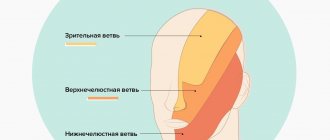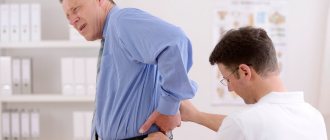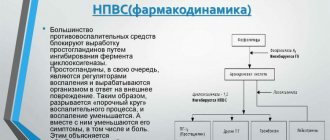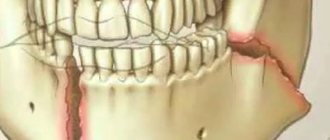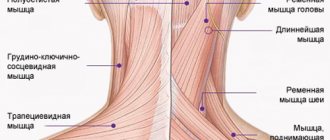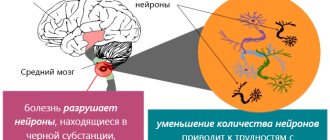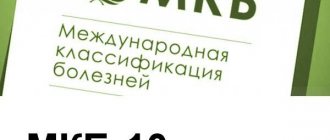Painkillers
This type of drugs can be divided into 2 types: those with a purely analgesic effect and anti-inflammatory (combining components that help relieve pain and eliminate the cause of the inflammatory process). The basis for both groups of these drugs is metamizole sodium (analgin).
Among the painkillers prescribed for neuralgia are:
- Tempalgin is a drug that has a complex effect and relieves pain in the shortest possible time;
- baralgin - blocks pain receptors. In essence, this is the same analgin produced abroad;
- diclofenac - the drug relieves inflammation, helps to quickly reduce temperature and relieve pain.
Intercostal neuralgia - symptoms and treatment
Physical examination is usually minimal unless the patient has a history of chest surgery (thoracic or subcostal surgery) or herpes zoster. It is preferable to conduct the examination of the thoracic spine with the patient in a sitting position and include examination at rest and palpation of the vertebrae and paravertebral structures. Provocation of pain by passive forward rotation, flexion, reverse flexion, and lateral flexion in particular may indicate that the pain is of spinal origin.[9]
As a rule, during the examination, the patient tilts the torso in the healthy direction, thus reducing the pressure on the affected intercostal nerve. If several nerves are damaged, a neurologist, upon examination, can determine an area of decreased or loss of sensitivity in certain areas of the skin of the body.
If the pain is localized in the heart area, differential diagnosis is carried out with diseases of the cardiovascular system (for example, angina pectoris, which, unlike MPH, is relieved by taking nitroglycerin). MRNs provoke movements in the chest and palpation of the intercostal spaces. Angina pectoris is characterized by a painful attack of a compressive nature, it is provoked by physical activity, and it is not associated with turning the body, sneezing, etc. To exclude coronary heart disease, you need to perform an ECG and, if necessary, refer the patient for a consultation with a cardiologist.
If the lower intercostal nerves are affected, the pain syndrome is similar to diseases of the gastrointestinal tract (gastritis, gastric ulcer, acute pancreatitis). It should be noted that with stomach diseases, the pain is usually longer and less intense and is usually associated with food intake. Pancreatitis is characterized by girdle pain of a bilateral nature.
To exclude pathology of the gastrointestinal tract, it is advisable to conduct additional examinations: analysis of pancreatic enzymes in the blood, gastroscopy, etc. If intercostal neuralgia occurs as a symptom of thoracic radiculitis, then painful paroxysms occur against the background of constant dull pain in the back, which decreases when the spine is unloaded in a horizontal position.
To analyze the condition of the spine, an X-ray of the thoracic region is performed, and if an intervertebral hernia is suspected, an MRI of the spine is performed.
MRN occurs in some lung diseases (atypical pneumonia, pleurisy, lung cancer).
When diagnosing intercostal neuralgia, one should keep in mind syringomyelia, meningoradiculitis, intradural tumors, as well as referred pain from internal organs – Hed’s area.[2]
Treatment of neuralgia during pregnancy
Neuralgia often develops during pregnancy. This happens due to a sharp gain in body weight or high fetal weight in the final stages. In principle, pregnant women are not recommended to take strong painkillers, but still, in case of acute pain, strictly as prescribed by the attending physician, the following drugs can be prescribed:
- voltaren,
- tizanidine,
- sirdalud,
- diclofenac.
In addition, if neuroconductivity is impaired, multivitamin complexes can be prescribed.
Types and symptoms
The disease can affect almost any nerve in the body. Symptoms of neuralgia depend on the type of disease and the location of the affected nerve.
| Name of the disease | Signs of neuralgia |
| Trigeminal neuralgia | Causes severe sharp pain in the face. An attack can occur at any time. Before an attack begins, a person experiences warning signs of pain: the face itches, “goosebumps” appear, and numbness appears. The sharp pain lasts for several hours. |
| Intercostal neuralgia | Severe pain in the ribs. It gets worse with movement, coughing or sneezing, or taking a deep breath. Most often, the disease occurs due to osteochondrosis of the thoracic spine. |
| Neuralgia of the sciatic nerve | Pain in the buttock area and radiates to the thigh, lower leg, heel and toes. The pain intensifies with movement, coughing, sneezing. A person feels pain or burning in different parts of the limb. Such pain immobilizes and does not allow you to stay in a fixed position. |
| Neuralgia of the external cutaneous nerve of the thigh | Pain in the outer thigh, skin burning and numbness. The attack intensifies with movement. The pain is usually aching and prolonged. May not be relieved by taking painkillers. |
| Occipital neuralgia | Pain, as a rule, occurs in the back of the head, rises higher, and spreads to the temples and eyes. An attack of pain occurs suddenly. Vomiting may occur. The pain may get worse. |
| Postherpetic neuralgia | Develops in people who have herpes viruses in their bodies. Pain can occur suddenly and regardless of the exacerbation of the herpes itself. Can be sharp and intense. |
Mechanism of action of Finalgon
Nonivamide in the composition of the drug, upon contact with the skin, irritates superficial nerve endings and dilates the vessels of the capillary network. Thanks to this, blood flow to the affected area increases, microcirculation is stimulated, and swelling resolves faster. The burning and tingling sensation caused by capsaicin leads to a reduction in pain, spasms, helps restore the mobility of damaged structures, and is distracting in case of severe pain.
Nicoboxil, which is contained in cream and ointment several times more than nonivamide, has a more pronounced vasodilating and warming effect. Its contact with the skin causes a sensation of intense heat, similar to the effect of mustard plasters. Both active substances act on pain prostaglandins, reducing the symptoms of muscle and joint diseases.
The effect of the medicine begins 3-5 minutes after applying it to the skin. The therapeutic effect increases within half an hour and lasts for about 2–4 hours. A feeling of warmth, redness and tingling of the skin develops locally: only in places where the drug comes into contact with the body, without spreading throughout the body.
With repeated applications of Finalgon, the analgesic effect of the drug increases and lasts longer than with the first use, since the sensitivity of the nerve endings to it increases.
How to use Finalgon
The drug is applied to clean skin, rubbing thoroughly. For moderate pain, it is recommended to choose a cream. For sharp, unbearable pain, it is more useful to use ointment.
- Squeeze a small amount of the drug onto the palm of your hand, applicator or cotton pad;
- distribute the product over the skin and quickly rub until absorbed, avoiding touching other parts of the body and face;
- if necessary, the application site can be covered with a warm cloth;
- After using Finalgon, hands should be washed thoroughly with detergent;
- the procedure must be repeated 2-3 times a day; it is useful to use the drug at night.
After using Finalgon on open areas of the body, it is not advisable to go out into the bright sun to avoid burns. You should not take water procedures within 2 hours, as otherwise the active substances will be washed off from the skin.
Is it possible to cure intercostal neuralgia yourself?
If you have been diagnosed with this disease, then you already know that it is accompanied by severe pain in the back, chest or lower back and dramatically impairs the quality of life and the ability to perform useful activities.
For effective treatment, not only the doctor must know his job well, but it is also important for the patient to understand the basic principles and stages of therapy and strictly adhere to the prescription and recommendations received.
A neurologist deals with diseases of this kind. He conducts an examination, makes a diagnosis, develops a treatment plan and helps you cope with your problem.
Nature of the disease
Intercostal neuralgia refers to a condition when the roots of the nerves or their trunks are injured, compressed or inflamed under the influence of various unfavorable factors. Nerve endings suffer from lack of oxygen and pain impulses appear. The problem occurs for many reasons:
- back muscle strain;
- injuries and diseases of the spine;
- osteochondrosis;
- diabetes;
- intoxication of the body;
- viral nerve damage;
- overwork and stress.
Neuralgia most often affects older people and is characterized by:
- prolonged round-the-clock pain of varying degrees of intensity;
- increased pain during body movements;
- adequate response to painkillers and heat application.
Exacerbation is the hardest time
Since the underlying problem is often an inflammatory process, measures are taken to relieve pain and eliminate inflammation. Usually these are different medications.
In the acute stage, there is an urgent need to relieve a person from physical suffering; strong painkillers in the form of injections or tablets come to the rescue. But temporary relief of pain does not mean that everything is over.
At the same time, anti-inflammatory drugs are prescribed. They do not show their effect immediately; it takes several days to achieve the optimal effect. You are required to be disciplined: follow the dosage and complete the entire prescribed course of treatment.
Attention! If you have problems with your stomach or intestines, be sure to tell your doctor. Why is this necessary? The medications used have contraindications and restrictions for a number of gastrointestinal diseases.
A new generation of anti-inflammatory medications are now available. They have much fewer side effects and higher safety. Doctors generally recommend them. The disadvantage is that it is expensive compared to traditional diclofenac or ortofen.
A few words about NSAIDs
The abbreviation NSAIDs stands for the main group of drugs used in neurology. The full name is “non-steroidal anti-inflammatory drugs”. In some cases, without these medications it is generally impossible to treat the disease, so they are used very widely. NSAIDs with selective (selective) action are considered more modern and effective.
It's gotten easier, but there's a long way to go
After the acute period has passed, the next stage begins - remission. Therapy continues, and now the main task is to prevent a new attack.
It is necessary to take measures to restore the mobility of the spine. The doctor will prescribe you additional medications and non-drug treatments:
- course of taking chondroprotectors;
- physiotherapeutic procedures;
- therapeutic exercises;
- massage sessions.
How to fight yourself
The arsenal of “traditional medicine” has accumulated a lot of advice for use in various diseases. You cannot blindly trust them and try them on yourself based on the recommendations of friends. Consult your doctor before experimenting.
However, some methods and remedies can help alleviate the condition:
- compliance with bed rest during an exacerbation and sleeping on a hard surface;
- limiting the weight of lifting objects to 3-5 kg;
- establishing rules: do not overcool, dress appropriately for the weather and avoid drafts;
- the use of ointments based on snake or bee venom is a proven remedy and will not cause harm;
- To use the pepper patch - apply to dry, clean skin and hold until pleasant warmth appears. You don't need to hold it for long.
- rubbing with a mixture of Vaseline and turpentine - mix a little of both and rub in;
- applying a compress - mix 1 tsp. turmeric with 2 tsp. ginger and ½ tsp. hot pepper, add water, apply the resulting pulp to the sore spot.
- baths - 4 tbsp. l. Brew sage with boiling water, leave for 1 hour and add to bathing water. Water temperature - 38 degrees, bath time - 15-20 minutes.
- use of “dry heat” - heat the salt in a clean frying pan, pour into a small bag, apply to the source of pain. Don't get burned.
How do folk remedies work?
Pain in the musculoskeletal system can subside for a while under the influence of certain beneficial effects:
- thermal - hot water or a heating pad with salt helps relax muscles and activates local microcirculation;
- distracting - the ointment is applied to the skin, local irritation appears. New sensations dull the pain.
- warming - blood circulation is activated, relief comes.
As mentioned above, pain is a reaction of the affected nerve endings to a lack of oxygen. Using any methods that increase blood flow to the affected area helps to weaken the pain impulse.
Treatment of neuralgia is quite lengthy and consists of several stages.
Contact specialists, follow doctor’s orders and recommendations. The use of folk remedies does not require large amounts of money and effort; they have proven themselves to be excellent, but it is not always possible to limit yourself to only them. Author: K.M.N., Academician of the Russian Academy of Medical Sciences M.A. Bobyr
